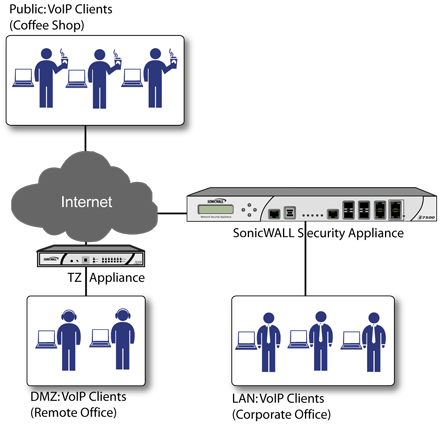The point-to-point VoiP service deployment is common for remote locations or small office environments that use a VoIP end point device connected to the network behind the firewall to receive calls directly from the WAN. The VoIP end point device on the Internet connects to VoIP client device on LAN behind the firewall using the SonicWall security appliance’s Public IP address. The following figure shows a point-to-point VoIP service topology.
Point-to-Point VoIP service topology

This deployment does not require a VoIP server. The Public IP address of the SonicWall security appliance is used as the main VoIP number for hosts on the network. This requires a static Public IP address or the use of a Dynamic DNS service to make the public address available to callers from the WAN. Incoming call requests are routed through the SonicWall security appliance using NAT, DHCP Server, and network access rules.
To make multiple devices behind the SonicWall security appliance accessible from the public side, configure One-to-One NAT. If Many-to-One NAT is configured, only one SIP and one NAT device will be accessible from the public side.
See the “Using the Public Server Wizard” section for information on configuring this deployment.
